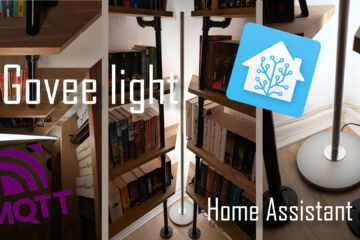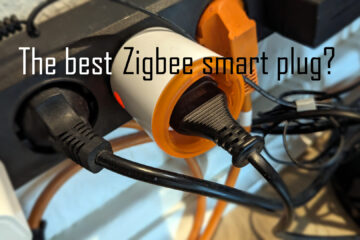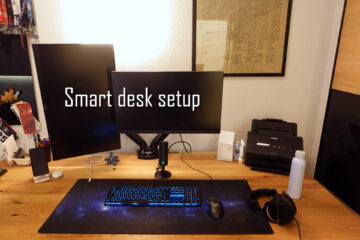Building a giant map of the world for my wall – using simple tools and materials
I wanted a giant map of the world on my wall so built one. Around 2,5m by 2m in size and with smart background LED lights. Here is how its done.
The idea
It all started with one of those ideas again: how about some nice combination of “art” and memory? Something to keep in mind the great vacations and all the places I have seen in the past – and maybe find some inspiration for the future. After building the T-shirt picture frames with themes from all over the world I was looking for some more… well world :).
In the past I had a big map on the wall right next to my bed and I remember quite quite often having a look at some part or another of the earth before falling asleep. In my current apartment I do not have such a map but there is some free space on a wall – so I decided to build a huge map that also looks great.
I was looking for some simple and elegant design matching the simple wooden furniture pieces I had built before. Some combination of wood and black should work well. During a quick trip to the local hardware store I compared several options for the base-board that the map would sit on.
Oak would look great but also a bit boring with all the wood already in the room – it is also really expensive in this size. MDF or similar material would be cheaper but would require me to paint them or otherwise hide them. Finally I stumbled upon some nice laminate flooring. I found a color that looks very similar to the oak wood one I used for the floor but is quite a lot lighter, nearly white. It matches the floor and the white walls so I decided to stick to that.
Building the base-board
This base-board will be mounted to the wall with some distance allowing me to mount some LEDs behind it and put the map on top of it. Assembling the board from the laminate was a very simple task: find some flat floor and connect all the laminate pieces (tong and groove system). I did this with the face layer pointing down to have access to the back.
The tong and groove system will only hold the laminate pieces together on the floor. To securely mount it to the wall some more support is needed. As I wanted to have some space between the board and the wall anyways I bought some two by two centimeter wooden strips as a support.
After cutting them roughly to size I glued them on to the back of the laminate. Construction adhesive would be the best choice here I think but I used wood glue and the bond was strong enough. I added four pieces, one on each side, roughly five centimeters inset from the edges. The leftover piece was then glued to the center of the board to avoid flexing in the board and to give some additional strength.

Just clicking the laminate pieces together only gets you so far in terms of precision and either way there is also the leftover tong and groove parts of the outer pieces that I needed to get rid of now that everything is securely put together. Therefore I decided to clean up each edge of the board. As it was already quite big and heavy at this point I got a nice circular saw with a guide over to the board instead of moving the board to the table saw.
If you want to build something similar consider buying materials via these affiliate links to support the blog
Festool circular saw
Laminate (I got mine from the local hardware store)
Wooden strips ((I got mine from the local hardware store)
Wood glue

The Festool tools while costing a lot certainly do their job well. It only took me a couple of minutes to clean up each edge of the board, even within the confines of my living room. Using a dust collector also really cut down on the time needed for cleanup afterwards. I also taped down all of the edges before cutting to avoid any potential splintering of the surface material. I do not know if this is needed but it certainly worked well for me.

Finally I added some holes going through the laminate as well as the wood behind it. I used these to mount the map to the wall while also securing the board to the frame behind it (again). I also countersunk each hole to make the screws a bit less obvious.

Adding smart LED lights
The board is ready now, its time for the illumination. Of course I had some add some LED strips to this project! The wooden strips are perfect for mounting some LEDs to them. I left around five centimeter space to the edge of the board so that light only reaches it in a very diffused way where you can not see the single LEDs.
If you are looking for similar illumination consider buying the hardware via this affiliate link to support the blog:
WW/CW LED set with remote and power supply
Zigbee LED controller
H801 Wifi LED controller
I bought a full set with a warm-white & cold-white LED strip as well as a remote and a power source. I won’t be using the remote though, instead I bought another one of the awesome Gledopto Zigbee LED controllers. This time I got a model made for these WW/CW strips.
I left a small opening in the wooden frame where I could store the wires I soldered to the end of the LED strip. The controller itself could then be mounted inside the frame close to that opening so that only the power supply would be outside. I wanted to tape the controller to the back of the board but when I was just about to do that I noticed a flaw in my plan: it is to thick (about 3-5mm thicker than the wood) so it will not fit between board and wall.



In the end I had to switch the Zigbee LED controller with one of my H801 Wifi LED controllers previously used for my nightstand build. Those are a bit smaller and just barely fit between wall and the map. I have to say, I really like the illumination here. I also added it to my smart light setup with adaptive lighting: this means it automatically dims up and down over the day as well as changing colors from cold to warm white. Pretty neat!
The lights are connected to my usual smart home server running Home Assistant. The connection works via MQTT and the H801 is flashed with Tasmota.

The map of the world
After finishing the frame and back board itself the mounting process was straight forward. Drilling some holes into the wall, adding some wall achors and then connecting everything with screws. I can not recommend the Torx screw heads enough by the way. No chance of stripping those which makes them perfect for these kinds of projects where you might want to put some force on them.
If you also want to get this map kit consider buying via this affiliate link to support the blog
Map kit
Next was the map. I was thinking about creating one myself but this is a LOT of work. Instead I bought a nice kit from Amazon where the map is laser cut from thin black Plexiglas. It comes with a template showing the position and number of each of the pieces on the map. For some reason (I guess it is from China) the map is centered on Asia though so I had to move the template around a bit to get my usual European centered map layout.

I also used the template, which can simply be taped to the back board, to make sure that everything will fit and to alight all of the different continents. Then it was time to start the tedious work of removing the protective film from the front of the acrylic pieces, find the right place, remove the paper from the template and finally removing the tape cover on the back and gluing into place.


While this took me quite some time, I think I spent upwards of three hours, it actually worked pretty well. I am quite satisfied with the map kit: the glue is very strong, the Plexiglas looks great and the layout works well. It even includes two of each of the small pieces in case you lose one.
There is also some flexibility here, I for example had to slightly shrink the Atlantic ocean to make sure the whole thing fits. I also decided to not use the captions and the compass for now to keep this more clean and minimalist. I guess mostly everyone will be able to find the continents without them 😉

More to come?
I am really glad I started this project. I love the result and the lights integrate very well into the existing smart light setup in the room. While this part of the project is finished I think I am not yet done with the whole thing. I need to add some small conduit to hide the cable and I am looking to somehow mark the places I have already visited on the map.
I am not yet sure how to best do that in a way that looks good. I had though about using a small projector or to use some wires to point to each city… Or maybe 3D print some small pieces for each one? If you have a great idea send me an email and let me know!


